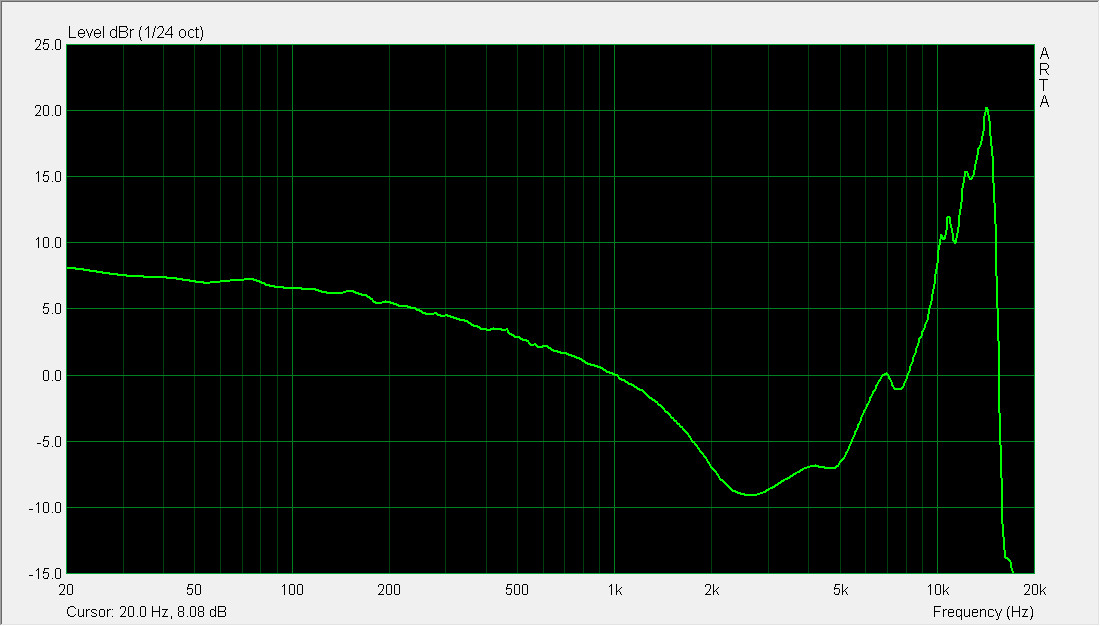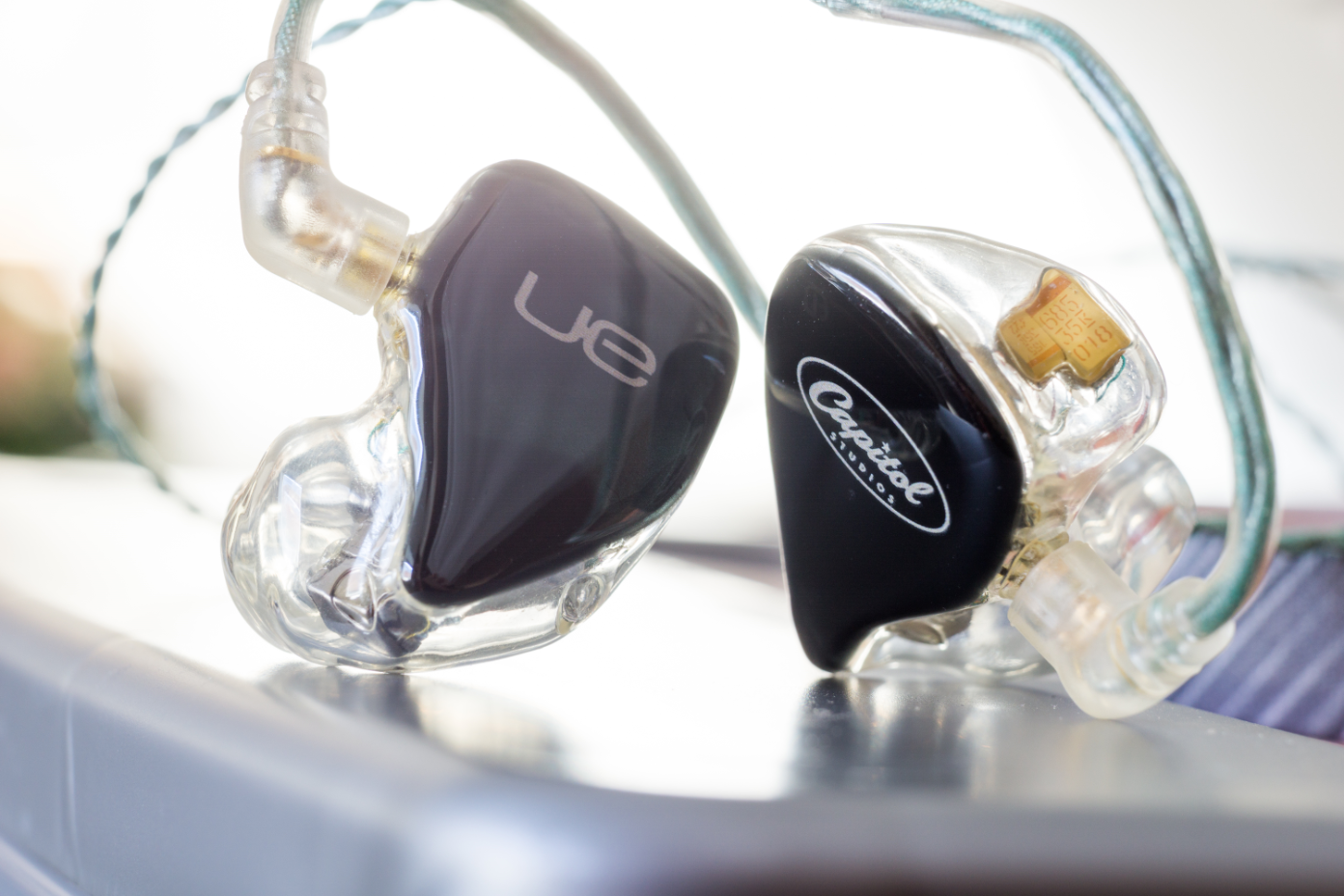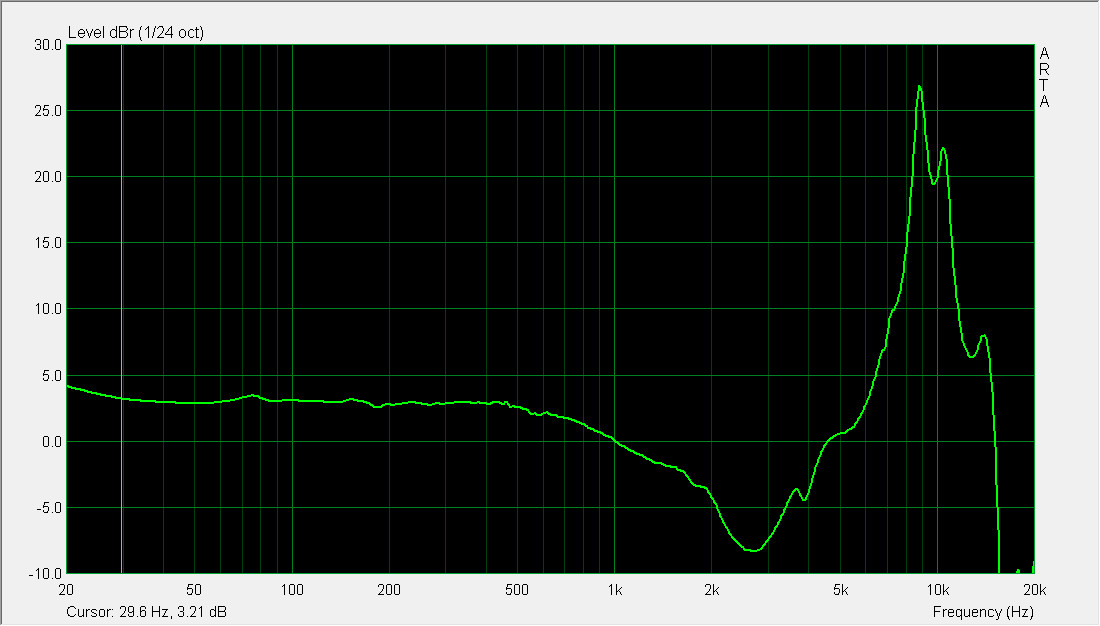Shure SE846
Source:
Personal unit.
Miscellaneous:
Excellent unboxing experience with a vast amount of accessories.
I really like the smaller of the two, squared carrying case – it is nicely padded on the inside with enough interior space, has got an extra pocket to store the cylinder containing the filter swapping tool as well as the separate tuning filters, and has got a nice, brushed metal top-plate inserted into the lid’s outer with a milled Shure logo (looks very premium).
Transparent shells that reveal the cleanly organised internal; I really like that and looking at the crossover PCB, drivers and internal wiring.
The BA drivers, by the way, have their respective number and frequency range etched onto them, which is a very nice and beautiful touch, along with an etched Shure logo on the tweeter.
The right hand side features a red plastic “cage” around the back of the quad driver package, which is an easy to see side indicator.
Unlike on Shure’s previous releases, the nozzles are removable as they contain the interchangeable sound tuning filters, and they as well as the threaded collars that hold them in place are made of metal.
Everything appears to be very sturdily made, and the build quality of the shells is really good and even a bit above that of my SE425s’ which are already really well built.
Due to the higher amount of drivers per shell plus woofers’ acoustic routing, the SE846s’ shells are noticeably bulkier than that of the SE425 or SE215m+SPE, but typically for Shure IEMs, fit ergonomically very well and provide high passive noise isolation.
MMCX connectors.
Strain relief is very good.
The cable looks very nice and is, except for the colour, pretty much identical to that of my SE425s’, and one can feel the twisted conductors (or perhaps shielding) through the protective silver and copper coloured mesh coating underneath the plastic, but with the disadvantage of less flexibility and more stiffness compared to the black cable; it’s still supple enough, though.
Four BA drivers per side, three acoustic ways, single-bore design.
Sound:
Largest included single-flange silicone ear tips.
The longer of the two cables.
White “treble” filters.
Tonality:
I’ve settled with the white “treble” filters quite soon after purchasing my SE846 as the other two included alternatives are audibly a good bit below neutral in quantity, and the “treble” filters don’t even lead to a bright but rather correct treble response.
That said, the SE846s’ sound signature could be best described as “fairly neutral leaning towards dark-neutral with Harman-like sub-bass boost”.
The SE846s’ “magic” truly lies in their bass boost implementation as it starts nicely low in the lower fundamental range wherefore lower midrange bleed and unnecessary bloom are avoided, and climbs gradually with its peak frequency being in the area of the lower midbass to actual sub-bass, with about 7 dB in quantity compared to diffuse-field flatness. As a result, I would definitely subscribe to Shure’s “true subwoofer” claim as this is really what the tuning is, without the added warmth and upper bass punch of other bassy or v-shaped in-ears such as the Ultimate Ears Triple.Fi 10, NocturnaL Audio Atlantis, Sennheiser IE 800, Fischer Amps FA-4E XB or Campfire Audio Andromeda; there are not too many other in-ears that focus on the lower bass as nicely while avoiding too much lower midrange warmth (spontaneously, out of the ones I have, it would be my Earsonics ES3 and the Etymotic ER2XR, as well as perhaps my Moondrop Starfield, with only the ES3 having the start of their bass boost even lower than the Shure, resulting in an even less affected (i.e. completely untouched) lower midrange).
This leads to a nice low bass subwoofer effect and the very low notes being nicely easily audible.
When it comes to midrange, the tuning is correct to very slightly on the more upfront, intimate side, but less “telephonic” when compared to the SE425 which appear a bit more intimate/closer in the mids. Ultimately, the timbre is even aver so slightly on the warmer side due to a slight bit of lower fundamental range elevation still exists, but not in a way that would colour the sound even mildly.
The SE846s’ lower treble is, to my ears, somewhat on the darker side, which leads to a more relaxed presentation of bright voices, with the area around 5 kHz being somewhat in the background as well to my ears.
9 kHz are around neutral in quantity, actually even just a little above that in quantity, but very far from being even considered remotely bright.
The in-ears’ bottleneck however is clearly everything above that – what follows is a steep roll-off, and frequencies above 10 kHz are pretty much non-existent. While that may be still
somewhat okay (although barely tolerable with the existing competition nowadays) for the lower-priced SE425 (that start to roll-off even earlier in the treble), that’s a real shame for in-ears in the SE846s’ price range, and is definitely audible as the in-ears simply lack the subtly perceived “air” and “extension” completely, and cymbals’ and other high notes’ decay and upper tones are just cut off from the recording, which results in an over-dampened sound perception.
Perhaps due to the early treble roll-off and therefore lacking overtones and perception as if the imaginary listening room were over-dampened, the perceived timbre appears plasticky/unnatural to me albeit there are no clues to this at all in the frequency response other than the steep and somewhat too early upper treble roll-off.
Frequency Response:
ER-4S-Compensation (white “Treble” Filters)
To my ears and on other measurements I know, the sub-bass elevation is stronger and the upper frequency peak does not exist but is in fact around/below the “neutral 0 dB” line; in addition, I hear the area around 5 kHz as being more recessed.
ProPhile 8-Compensation (white “Treble” Filters)
Resolution:
The SE846 resolve generally very well, while they are not the “best” multi-BA in-ears in their price range.
Despite not reaching UERM levels of resolution, they are generally not too far apart.
Just like with the tuning, the bass is also the Shures’ strongest area when it comes to technicalities, as the bass remains fast, punchy, detailed and tight even with layered, complex, sub-bass-focused tracks, and never loses control. As the decay seems to be just a tad longer than “ideal”, the presentation also feels “natural”, but is far from being perceived “sloppy”/”slow” as the perceived bass attack appears to be clean and fast; this just adds a bit more “perceived impact”/”texture” (which is really good) compared to IEMs with faster bass decay, such as my UERM.
In terms of midrange resolution and speech intelligibility, the Shure sound and resolve really well; there is nothing to complain here.
The treble is a somewhat different story – while not lacking resolution as such, the presentation is rather soft and high notes just sound soft and not all that well separated compared to the mids and lows, which, in fast and more treble-focussed, cymbal oriented tracks, leads to the highs losing some definition, with the separation of individual high notes becoming more difficult to perceive; maybe this is also another aspect of why the Shures’ timbre does ultimately not appear to be very realistic/lifelike.
While this is ultimately criticism on a high level and the SE846 are clarly not “bad” in the highs, this area is, in the end, just behind the mids’ and bass’s quality and not as good as it could be.
Soundstage:
Not all that surprisingly due to their frequency response with a generally rather dark treble and early roll-off, the perceived soundstage is not all that impressive in terms of size, especially for the price and the comparably priced competition, although larger that that of the SE425 and ultimately about half the size of my UERM.
While not particularly large but only “average-ish” to my ears (and therefore not lacking), the presentation is at least circular and three-dimensional to me, and when it comes to imaging, layering and instrument separation, the Shure offer high precision that is close to that of my UERM, although undeniably with smaller perceived expansion to the sides and less forward projection. As a result, while not wowing in terms of pure size, the stage is at least authentic, three-dimensional and precise.
“Emptiness” between instruments/tonal elements is generally presented well, with only little “fog” around the imaginary tonal elements.
- - - - - - - - - - - -
Comparisons:
Etymotic ER2XR:
Both in-ears have got a comparable tuning and clearly head into a similar direction in terms of sound, but still have some differences in their tonality.
While the upper bass presence at 100 Hz is almost identical on both in-ears, the ER2XR have got slightly more quantity in the root above it up to around 450 Hz, and have got a sub-bass boost that is a bit stronger and peaks a bit deeper, giving them an even somewhat stronger “subwoofer effect” than the SE846.
The Shures’ upper mids and presence range are somewhat more in the background wherefore their upper mids are a bit darker than the Etymotics’.
To my ears, the Shures’ middle treble around 5 kHz is more in the background in comparison, which gives them a more relaxed presentation. The upper treble (cymbals) are somewhat more forward on the SE846. Super treble extension past 10 kHz is definitely better on the Etymotic.
The Etymotic beat my Shure when it comes to upper midrange and treble linearity as well as realism and timbral accuracy.
Voices are more realistic on the Etymotic whereas they have a more relaxed, darker character on the Shure due to their comparatively more relaxed upper midrange, presence range and middle treble.
The biggest difference however is the upper treble – while the Shure render cymbals brighter than the ER2XR, they don’t sound fully right, and that’s not because they are brighter, but because they appear as if they decayed faster (over-dampened), since they lack the upper tones and reverb as the SE846s’ super treble extension is pretty limited; in comparison, cymbals appear to decay correctly on the ER2XR and have got that reverb, decay and the upper tones that they are supposed to have, as the Etys’ super treble extension is better.
Bass tightness and sub-bass definition are ultimately superior on the Shure when both in-ears are compared directly, but surprisingly not by much.
If fast music tracks are played, the Shure remain a bit better controlled and more focused in the bass and mids than the ER2XR, although the difference is smaller than one may expect.
In terms of speech intelligibility, the Ety are ahead due to their tuning as their entire midrange is more neutral, however the Shures’ retrieval of micro details in the mids is better in direct comparison.
It is a different story, though, when it comes to treble details: here, the Etymotic are audibly somewhat ahead, as the Shure simply lack information and sound softer, less precise and less clean when it comes to treble separation.
The Etys’ soundstage appears subjectively larger to me. The Shures’ is more circular to my ears while the Etys’ is slightly more oval in comparison.
In terms of imaging, the Shure are only minimally more precise in direct comparison. With dense, fast and complex music material, the Shures’ stage remains a bit more intact.
Shure SE425:
Both differ clearly in their tuning with the SE846 being more (sub-)bass focussed compared to the more neutrally, somewhat midrange-forward tuned SE425.
Upper mids are somewhat more recessed/darker on the SE846; while they also lack super treble extension, the SE846 start to roll off somewhat less early than the SE425 which gives them ultimately somewhat more “air” and the less muffled cymbals in comparison.
In terms of technical strengths, the SE846 are an audible step above the dual-BA in-ears and generally resolve better, although due to their comparatively more direct upper midrange/presence range tuning, the SE425 are more “critical” with the recording and “analytical” than the SE846 that present a more relaxed sound but are, when it comes to pure details, clearly ahead.
The SE846s’ soundstage is larger than the SE425s’ and also more precise when it comes to imaging.
Conclusion:
The clean and well-implemented, subwoofer-like bass boost is definitely something that makes the SE846 for a very enjoyable listen with their otherwise safe and even tuning.
Bass and midrange details are on a high level as is the imaging precision and layering with the believable three-dimensional soundstage, although the Shure don’t impress when it comes to pure soundstage size.
Their weak point, however, is definitely the treble, especially for the price – extension is clearly limited with a steep and somewhat too early roll-off that leads to a lack of overtone reproduction and an overall timbre that seems to mimic an over-dampened room; when it comes to technical qualities, the highs are also somewhat below the bass and midrange in terms of quality as they sound too soft, which is something that ultimately leads to the high note separation becoming blurry if the recording is too fast in the highs.
Photos:






















































































